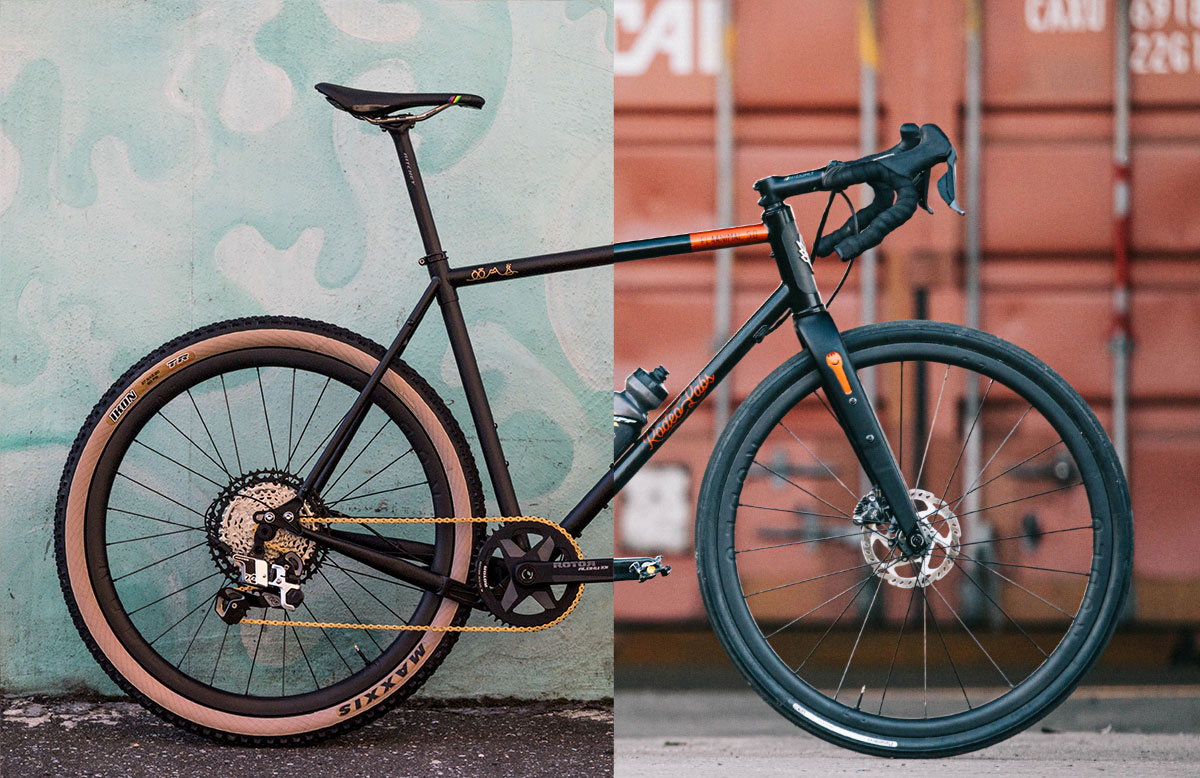
Evan Christenson
Our guide to: 700c vs 650b
- ,
- , Gear
In a world as growingly divisive as our own it’s easy to mistake any binary decision as exactly that. If you’re offered two boxes to choose from surely one must bring promise and fortune and the other misery and solemnity. So you’re here on this beautiful website and you’re thinking of buying a bike and you get that all familiar decision between two evils. Surely one box must bring enlightenment and joy. The other an awful ride and buyers remorse.
But we’re here to reassure you that regardless of what wheel size you select, enlightenment and joy are still mere pedal strokes away. ±50c is not the barrier between you and the wind, wheelies, an escape, or that dang KOM you’re 6 seconds off and only, JUST only(!) would that other wheel size get you that trophy to prove the worth of all those hours lying about your weight on Zwift. We’re here to reassure you this – both wheel sizes are great. They both have their benefits and drawbacks. But you want the best, right? Then carry on.
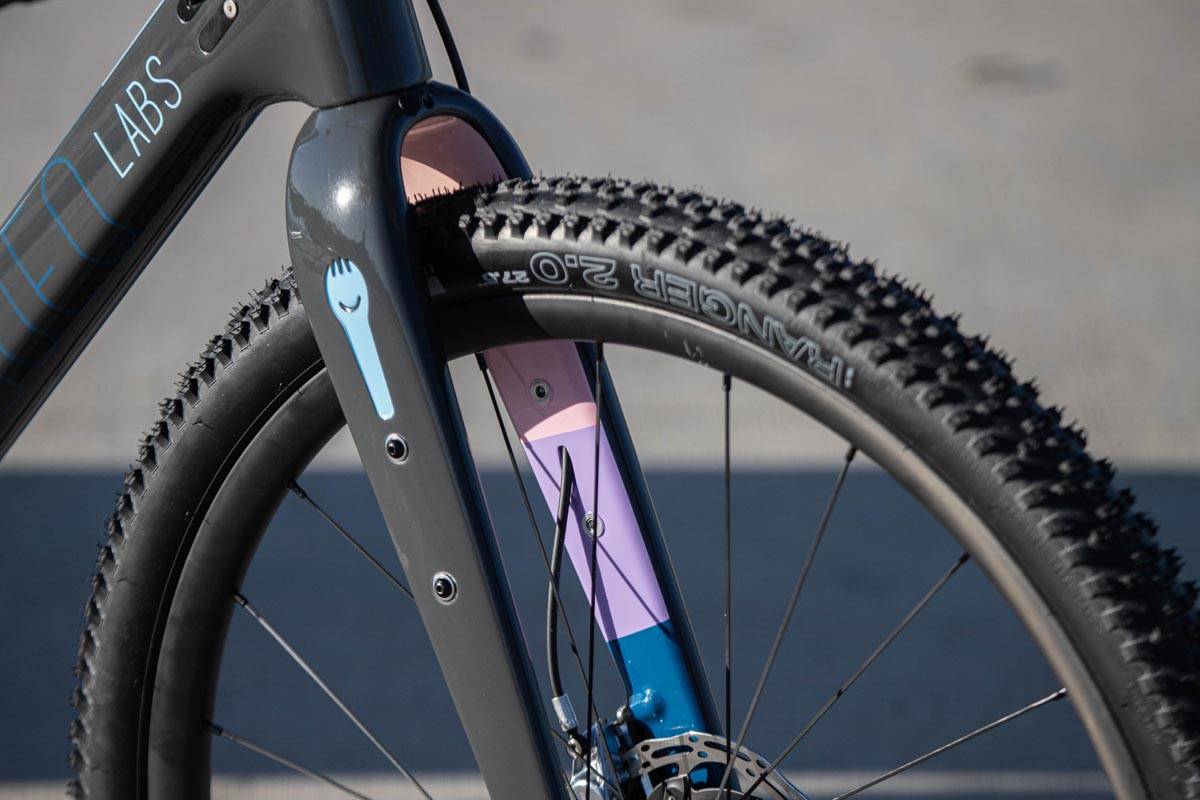
700c: Efficiency / Familiarity
This is where we normally start people. If you are to be riding mostly asphalt and doing what the industry likes to label as “endurance road” or “traditional gravel” cycling, this is the wheel size we most often recommend for riders like you. A Donkey with 700×32-38mm slick tires is fast fast. Even fast enough to hang with your roadie friends depending on the temperament of the ride. Big slicks roll quiet and get you where you need quickly. A donkey with 700x43mm or 700x38mm knobby tires (we love a GravelKing SK+) is one of the most versatile do-it-all setups out there. Tires in this range still roll quick, and will drop off the road and shred until the sun goes down – and they’ll keep shredding until it comes back up. Heck, our newest Donkey will fit a 700x50c and the Flaanimal 5.0 will fit up to 700c(29”)x2.1” if you’re truly interested in riding aggressive, riding dirty, and riding long. A wheel/tire like this will relax the handling and let you run a lower pressure to soften blows and lengthen the ride. 700c tires are generally more readily available and have faster, more road oriented versions (but 650b options are expanding every day.) Other more technical benefits of a 700c wheel/tire are slightly reduced rolling resistance and better roll-over for bigger objects (roots and baby-heads). Think more monster truck vs rally car. Also, if you’re riding in severe mud conditions you want to run a thin (32-28mm) 700c tire to cut through the mud where a big 650b would eat up your frame clearance and have a higher chance of packing up with mud.
So when shouldn’t you run 700c? If you’re a smaller rider and worried about toe-overlap you might consider 650b. It is important to note that our frames are designed to eliminate toe overlap for the majority of riders on most tire sizes but there are always exceptions for riders gifted with large feet. Lastly, if the numbers “700c” trigger violent flashbacks of last lap criterium crashes and puking on the group ride maybe consider the alternative.
650b Comfort / Traction
The alternative.
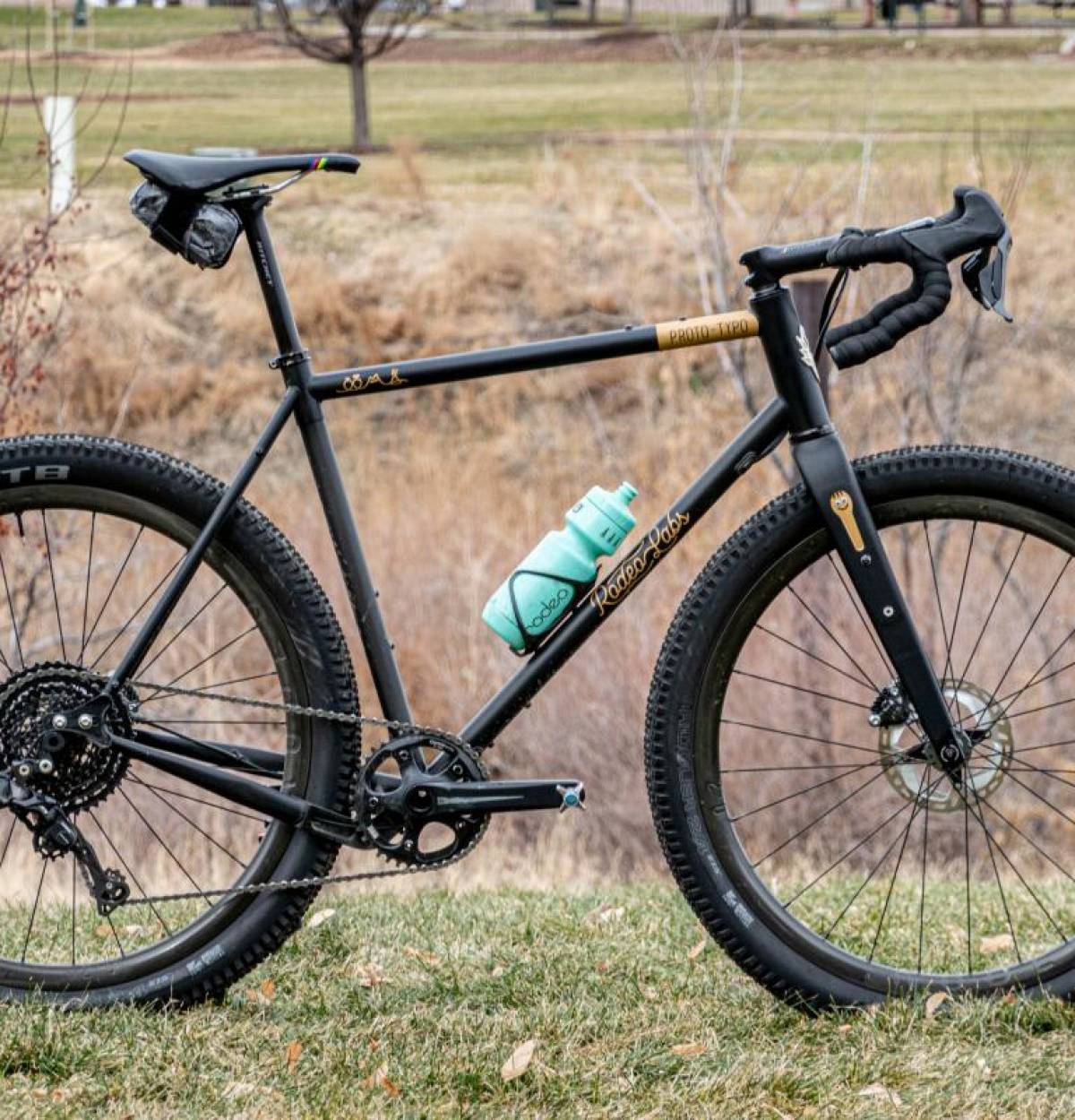
The merits of 650b are warm and cuddly. If you’re less interested with speed and aiming for more comfort in general this could be a better alternative. The aforementioned newest Donkey promises 650x56mm clearance. The newest Flaanimal 5 can run a staggeringly large 650×2.4” (60mm) tire. The 650b wheel allows larger tire selections to create an absurdly lazyboyTM ride and with tires as voluptuous as these, pressures can be ridden in the teens to flatten bumps. In sandy, snowy conditions a bigger tire helps you stay on top of the terrain rather than bogged down in the grit of it, so if you’re riding deep sand, go as big as you can. A smaller wheel also accelerates faster and handles with more excitement in case your vision of gravel riding means more singletrack and less fire roads. Overall, this wheel size can be ran fat and slow or thin and nimble. Each direction, either narrower or fatter, both offer great riding.
Tire choice is growing for the 650b gravel market and plenty of great options are already available to cater to your specific needs. We generally spec our bikes with a Panaracer Gravelking SK+ which we believe to be the perfect do it all tire. For dedicated trail riding we start looking for knobbier tires in order to bite into the dirt and offer more traction.
What is so exciting about these bikes is their adaptability. Each wheel size offers a dozen or more great tire choices to pair with that can give you so much range on what your bike is capable of. Here is our quickest rule of thumb: We start most people on 700c by default unless they tell us they want to prioritize comfort over speed. 700c feels more familiar to people coming into gravel from road bikes. We tell people to go 650 if they describe to us a preferred riding style that includes more trail riding or rocky terrain where bigger tires lead to better comfort and traction.
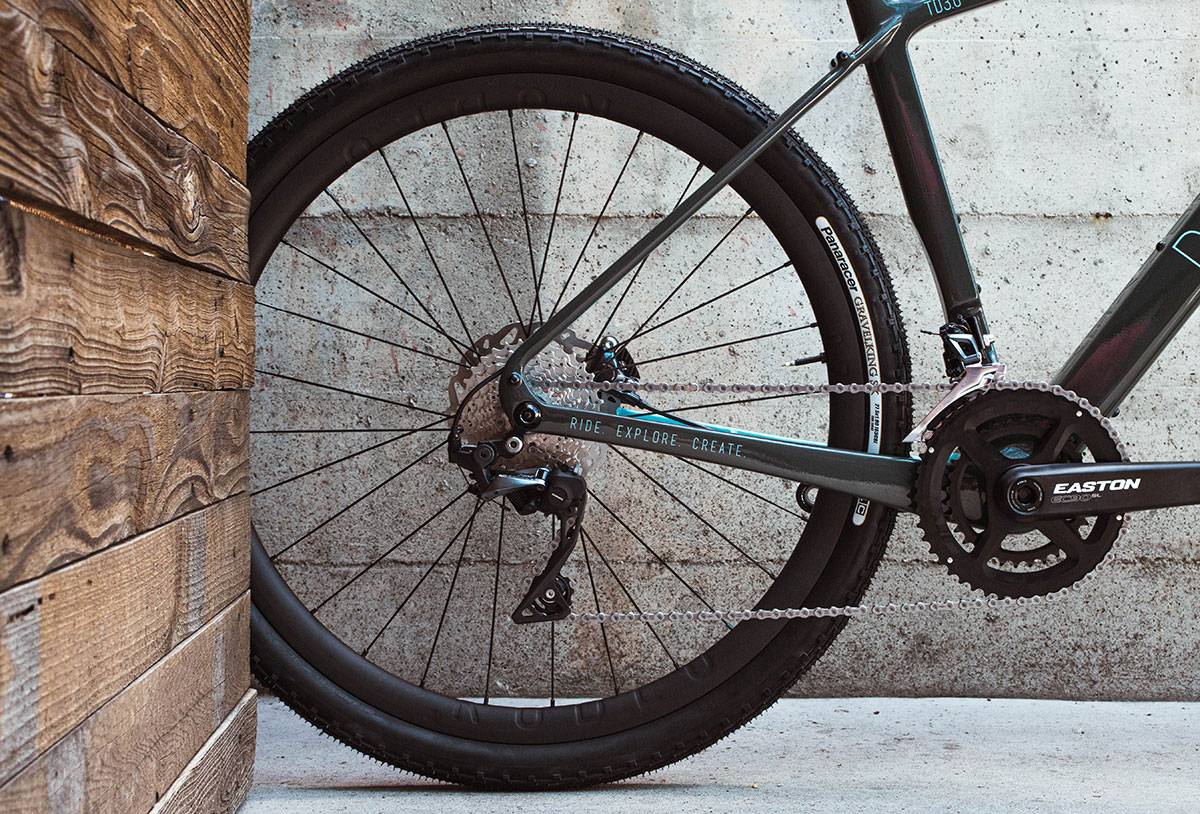
In the end about 20% of our customers can’t decide which wheels size or tires to run and they end up picking up both a 650b and 700c wheelset. This is in fact how most people here at Rodeo set up our bikes and this is why we offer a $300 discount on any Rodeo wheelset build to anyone who owns one of our framesets. This pricing never expires as long as you own a Rodeo.
Max tire size per frameset:
These measurements are taking on our Rodeo 2.0 carbon rims. Your mileage may vary on other brands of rims with different specifications. Heavier / stronger riders are able to deflect a tire more than lighter / finessed riders. Tire deflection (deformation) can lead to tire rub in some conditions.
When riding in mud always leave room for mud to pass through between the tire and the frame. The larger the tire the more mud clearance is reduced.
650b x 57mm (2.2”) // 700c x 50mm (2.0”). The newer Spork 3.0 on TD3.1 can accept a larger front tire than TD3.0 due to increased fork tire clearance.
650b x 61mm (2.4”) // 700c x 54 mm (2.1”)
650b x 57mm (2.2”) // 700c x 50mm (2.0”)
650b x 47mm // 700c x 45mm
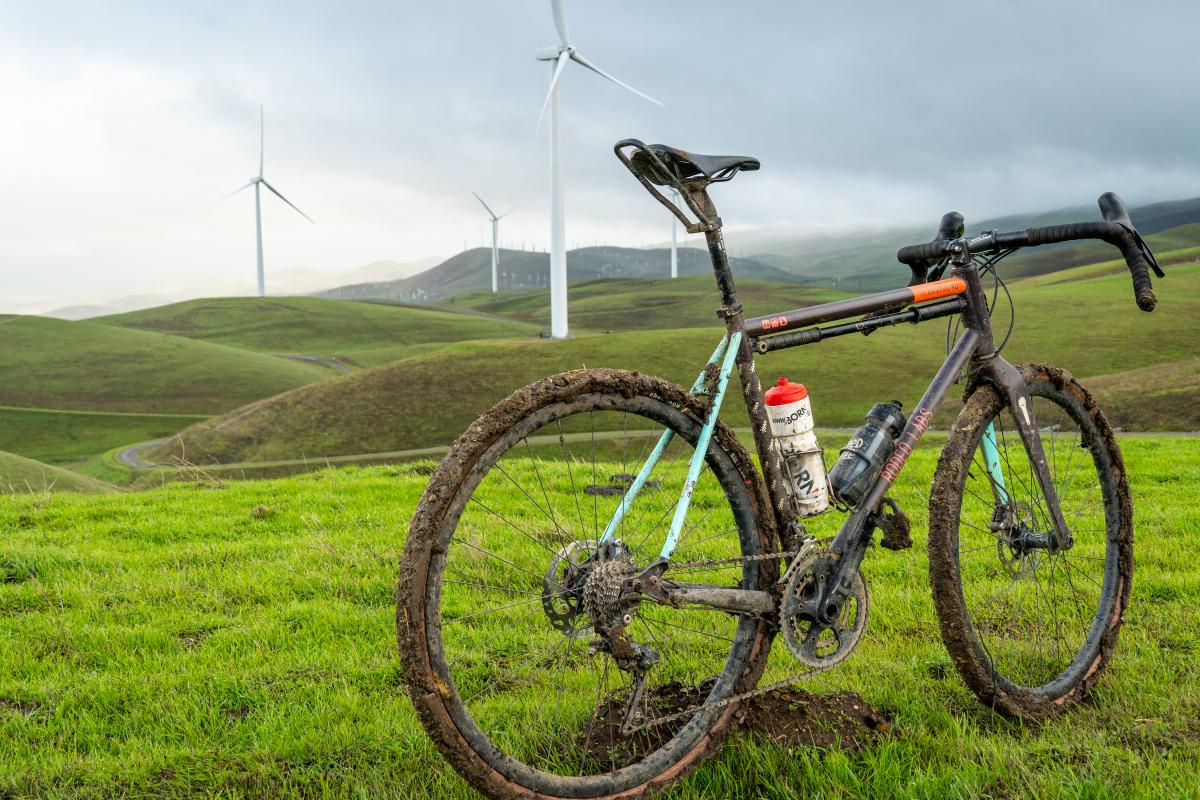

No comment yet, add your voice below!